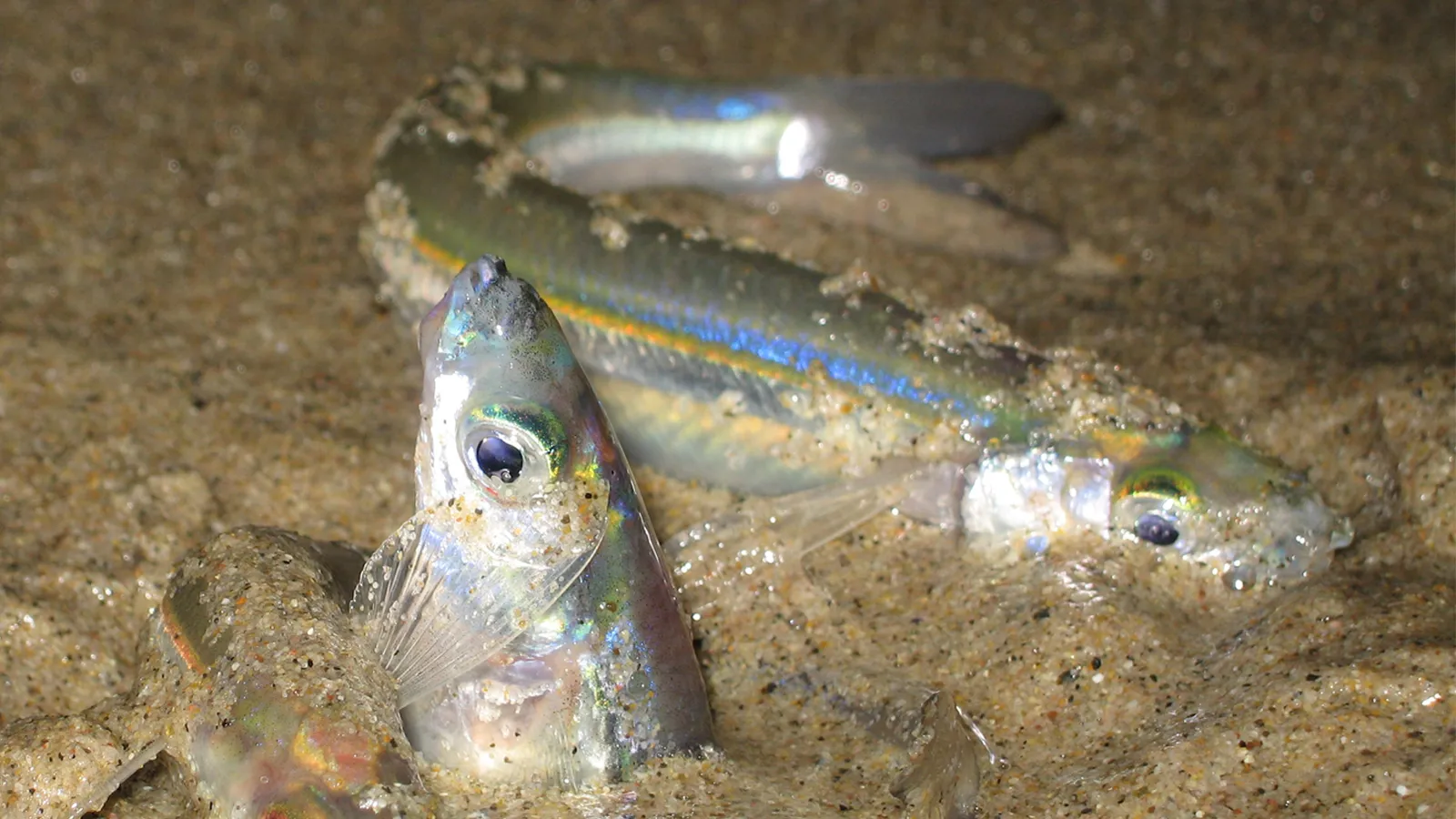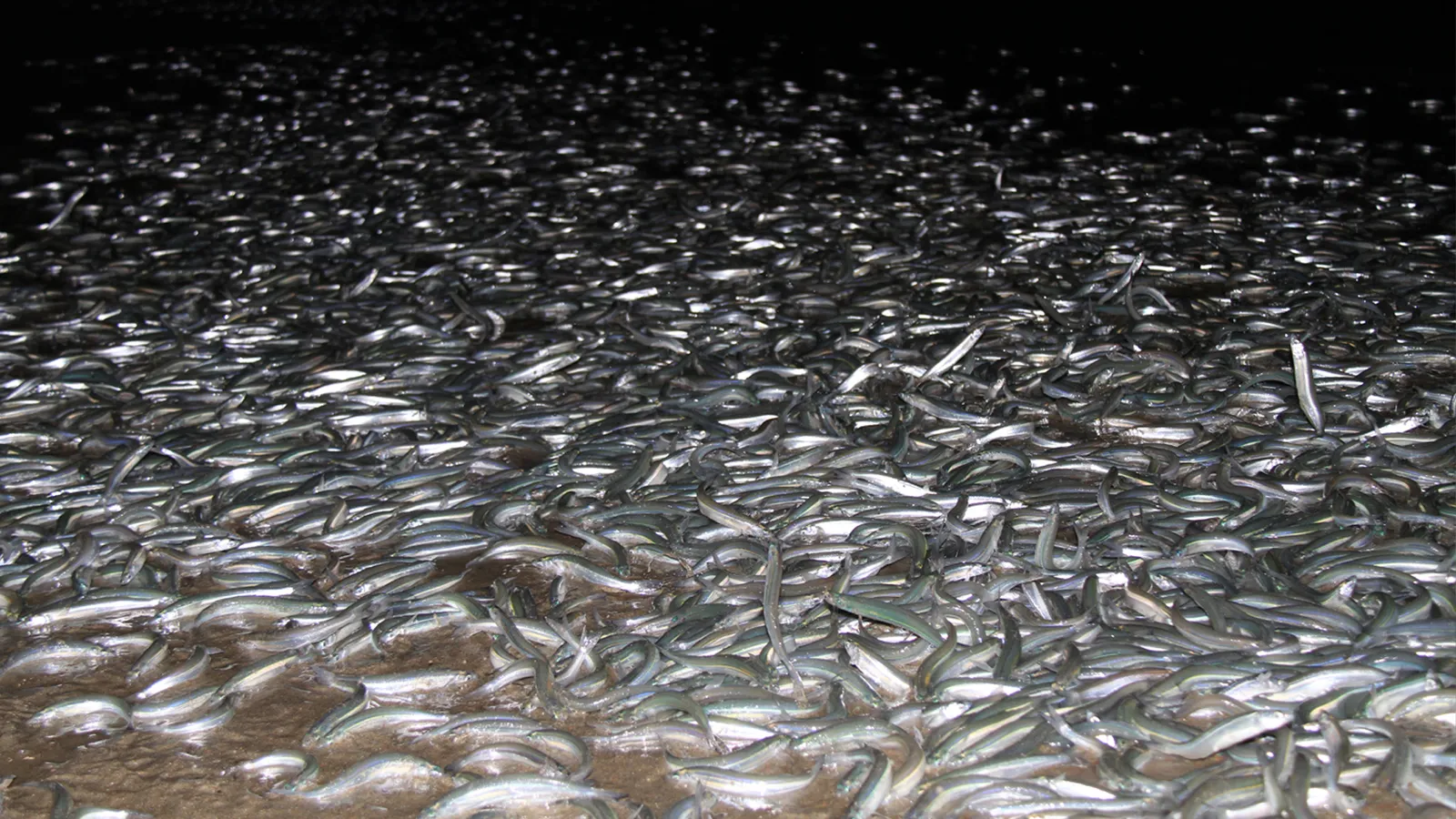[social_warfare]
The Moonlit Dance of the Grunion: California’s Coastal Phenomenon
Under the glow of the full or new moon, a spectacle unfolds on the sandy shores of Southern California that could rival any scene from a blockbuster movie.
Imagine a scene straight out of a marine version of Mad Max—thousands of small, silvery fish, known as grunion, hurl themselves onto the beaches in a frenzied, nocturnal ritual that is as chaotic as it is captivating.
This isn’t just any animal behavior; it’s the grunion run, a mating dance dictated by lunar cycles and tides, where survival and reproduction intermingle on the sand.
What is The Grunion Run?
The grunion run is one of nature’s most extraordinary reproductive events, where grunion emerge en masse on select Southern California beaches. This remarkable phenomenon occurs strictly under the darkness of the new or full moon, when tides are high enough to reach the upper stretches of sandy shores.
During these nocturnal events, female grunion ride the high tides up the beach, where they proceed to dig themselves tail-first into the sand to lay their eggs. Males follow suit, wrapping themselves around the females to fertilize the eggs externally. This synchronized dance ensures that the eggs are safely nestled in the wet sand, where they incubate for about ten days. The timing is crucial; the eggs must remain undisturbed until the next set of high tides, which will facilitate the hatching process and allow the newborn grunion to be swept into the ocean.
The grunion run is unique not just for its spectacle but for the precise environmental conditions it requires. The beaches where grunion spawn are often the same stretches popular with tourists and locals for recreational activities. This overlap makes the grunion particularly vulnerable to disturbances from human activity, such as beach grooming and pollution, which can endanger both the eggs laid in the sand and the adult fish during their spawning.

At the heart of understanding these unique creatures is a community-driven initiative led by Karen Martin, a seasoned scientist from Pepperdine University. Since 2002, over 5,000 volunteers, affectionately dubbed “grunion greeters,” have played a pivotal role in gathering data about these fish at 50 designated beaches across California. Martin asserts, “We couldn’t do it without them. There is no other way for us to get this kind of data. It’s pretty remarkable, actually.”
These citizen scientists are crucial because grunion, smart and elusive, defy traditional methods of population assessment. They dodge nets, ignore bait, and, as a result, remain somewhat of an enigma in terms of exact numbers. Their conservation status hangs in a precarious balance, underscored by a noticeable decline in their populations over the past decade due to beach erosion, light pollution, coastal development, and the indirect impacts of tourism and local activity.
Regulation and Preservation Efforts
Efforts to protect the grunion have a storied history, with initial regulations dating back to 1927 when the California Department of Fish and Wildlife first observed the grunion’s vulnerability during their onshore spawning. The restrictions have evolved from banning certain fishing gear to implementing no-take seasons, extending from April through June, thanks to sustained advocacy and accumulated data from the grunion greeters.
These regulations have become more stringent over the years. For instance, in 2020, the fishing restrictions were further tightened, with limits set on how many grunion one could harvest even outside the no-take season, reflecting the growing concern over their declining numbers.

The Ripple Effect of Citizen Science
The data collected by the grunion greeters has not only informed regulatory changes but also fostered a broader awareness and appreciation for these marine creatures. The community’s involvement has turned local residents into staunch defenders of the grunion, often educating others about the importance of adherence to the fishing regulations.
Karen Martin reflects on the transformation in perception towards citizen scientists, from skepticism to a valued partnership. “People are excited to know that they’ve made this sighting and that their knowledge is useful—that somebody cares about what they’ve seen,” she says. This shift signifies a deeper societal connection to local wildlife and ecosystems, proving that community involvement in scientific endeavors can yield substantial environmental stewardship.
A Dance Worth Preserving
The grunion run is more than just a biological curiosity; it’s a testament to the intricate ties between lunar cycles, marine life, and human interaction. As Southern California continues to grapple with the challenges of conservation and urban development, the fate of the grunion underscores the broader dialogue about our role in safeguarding not only these spectacular fish but also the delicate balance of the ecosystems they inhabit.
In essence, the dance of the grunion is a call to action—a reminder of the beauty and fragility of nature and our enduring responsibility to protect it. As we look towards the future, the ongoing collaboration between scientists, citizen volunteers, and policymakers will be crucial in ensuring that the grunion runs continue to enchant and educate future generations.
Source: BBC / Cover Image: Karen Martin
